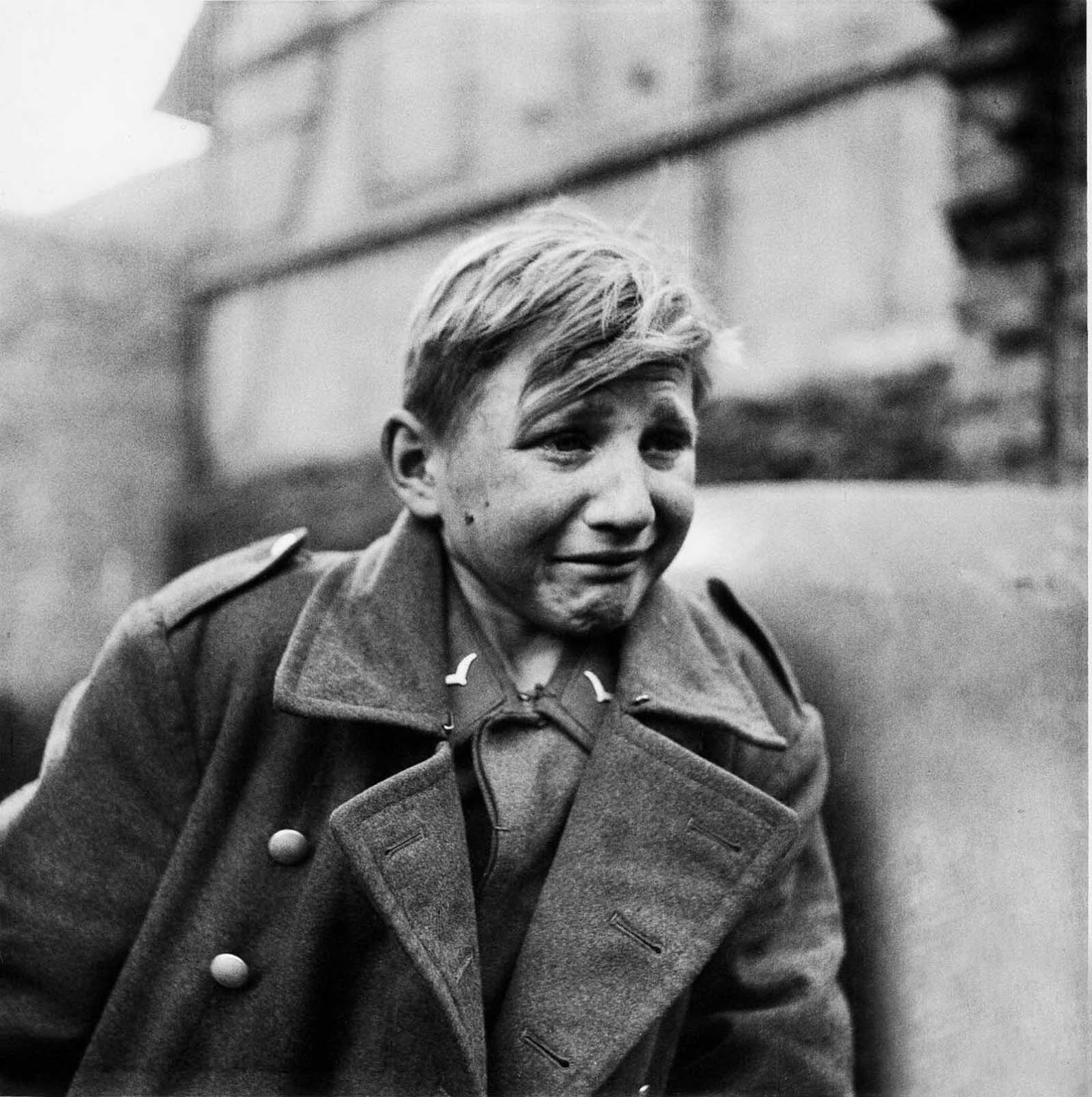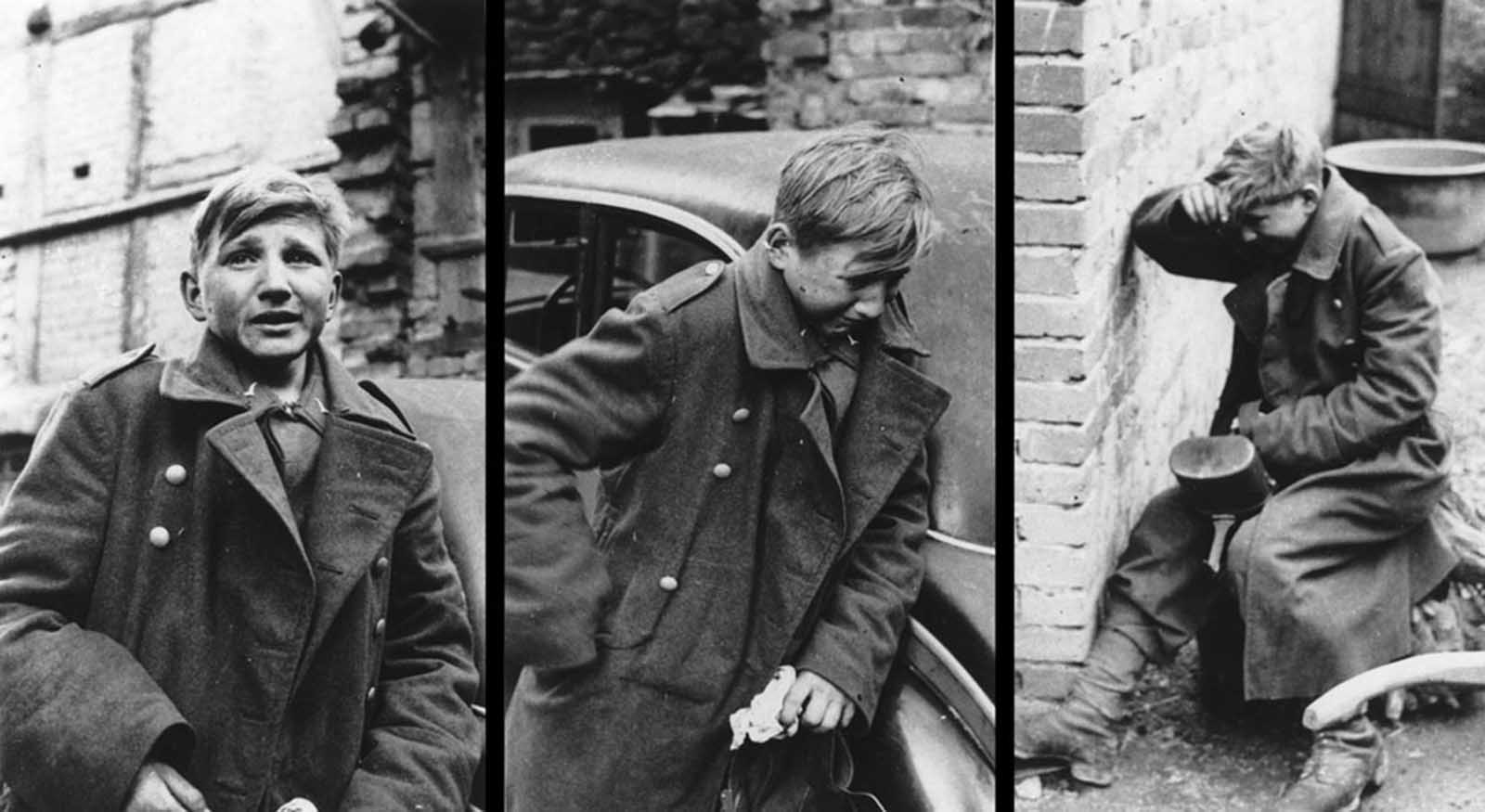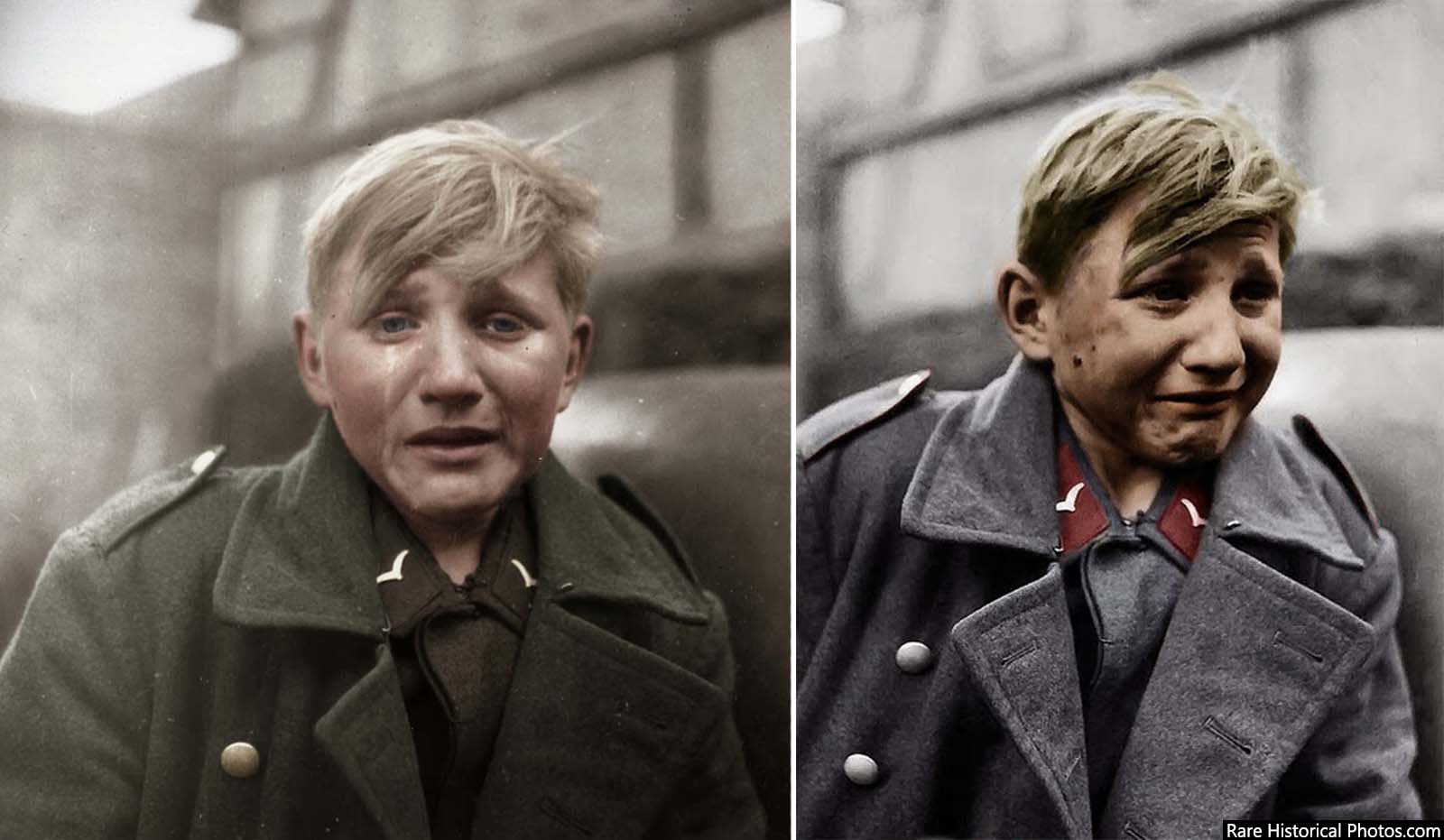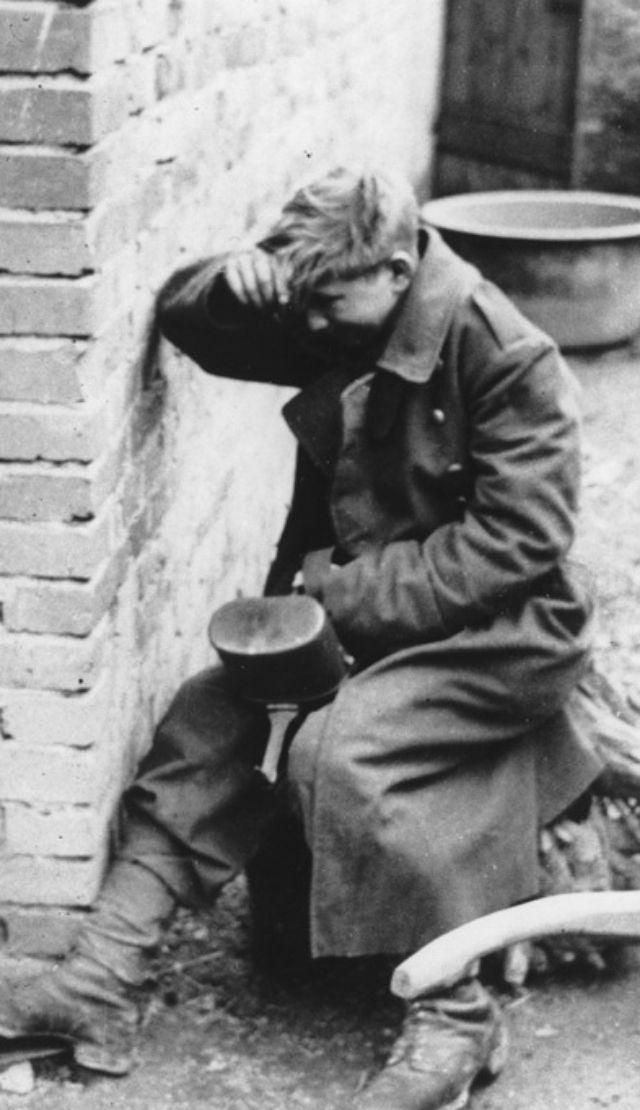His father died in 1938 but when his mother died in 1944 leaving the family destitute, Hans-Georg had to find work in order to support the family. At 15 years of age, he joined the Luftwaffe. According to the story that Henke maintained throughout his life, he was based in Stettin with a battery of 88mm guns. As the Soviets advanced so the German forces were pushed back towards Rostock. It was here where the Soviets finally overran their unit, that these photographs were taken. The alternative story is given by the American photojournalist John Florea. He alleges that he took these photographs in Hessen, in the village of Hüttenberg-Rechtenbach, which is just north of Frankfurt am Main. The area in which the photos of Hans-Georg were taken is incontrovertibly Hessen. A number of photos taken clearly show areas of the town that still exist today. Furthermore, as these photos indicate, he was bearing boots when captured and not, as he alleged later, with rags on his feet. John Florea is adamant that Hans-Georg is not sobbing because his world had crumbled but rather due to combat shock after being overrun by the American forces. The sole motive for Henke modifying his story must relate to the fact that after the war he elected to join the Communist Party and live in East Germany. The East German Communists regarded all those who had surrendered to the Americans as a potential third force. To cover his tracks, Henke changed the story from being overrun by Americans to being captured by the Russians.
Hans Georg Henke lived a full life and died at the age of 69 on October 9, 1997, at Brandenburg, Germany. These desperate photographs have been used extensively to illustrate the effect of the world crumbling around the German populace during the last days of Nazi Germany. (Photos credit: John Florea / The LIFE Picture Collection / US Army Archives). Notify me of new posts by email.
Δ Subscribe







